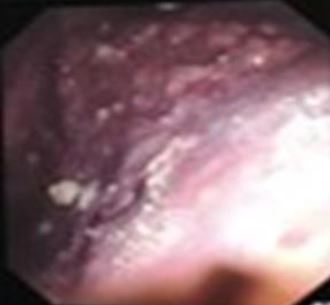Clinical and histopathological profile of patients with exudative pleural effusion of unknown cause who undergo medical thoracoscopy
Abstract
Background: Exudative lymphocytic effusions form a significant proportion of undiagnosed pleural pathologies. This study explores the clinical and histopathological profile of exudative pleural effusion of unknown cause who undergo medical thoracoscopy.
Materials And Methods: This cross-sectional study enrolled 37 patients with exudative pleural effusion. Ultrasound-guided thoracentesis was conducted and samples were sent for pleural fluid cytology. Thoracoscopic pleural biopsy was kept as the gold standard.
Results: A total of 37 patients were included in the study. 14 (37.83%) were smokers. 19 (51.35%) were exposed to firewood smoke. Only 1 participant (2.7%) reported exposure to passive smoke.5 patients had STEMI/ recent CABG in the last 1 year.1 participant reported a history of Ayurvedic drug intake. There was no asbestos occupational exposure in any of our subjects but 5 of our subjects had mesothelioma. It can be related to an indirect exposure which is absent due to a recall bias. 2 participants reported a history of recent trauma or RTA, but it was unrelated to the final diagnosis. Histopathological profile showed adenocarcinoma in 19(51.35%), tuberculosis in 7(18.9%).Thoracoscopy pleural findings include nodules in 26(70.27%).
Conclusion: Our study concluded that pleural nodules on thoracoscopy were suggestive of malignant aetiology with good cytology yield. Pleural metastasis from lung adenocarcinoma has a good yield of cytology and is the most common cause of exudative pleural effusions that underwent medical thoracoscopy.
Downloads
References
Egypt J Chest Dis Tuberc. 2014 Jul 1;63(3):629–34.
2. Magkouta S, Glynos K, Pappas A, Papapetropoulos A, Kalomenidis I. Effect of smoking on experimental malignant pleural effusion. Eur Respir J [Internet]. 2015 Sep 1 [cited 2024 Jul 9];46(suppl 59). Available from:
https://erj.ersjournals.com/content/46/suppl_59/PA4343 3. 45. Tewatia P, Kaushik RM, Kaushik R, Kumar S. Tobacco smoking as a risk factor for tuberculous pleural effusion: a case-control study. Glob Health Epidemiol Genomics [Internet]. 2020 [cited 2024 Jul 9];5. Available from:
https://www.ncbi.nlm.nih.gov/pmc/articles/PMC7054301/ 4. 46. Báez-Saldaña R, Canseco-Raymundo A, Ixcot-Mejía B, Juárez-Verdugo I, Escobar-Rojas A, Rumbo-Nava U, et al. Case-control study about magnitude of exposure to wood smoke and risk of developing lung cancer. Eur J Cancer Prev Off J Eur Cancer Prev Organ ECP. 2021 Nov 1;30(6):462–8.
5. 47. Light RW. Pleural effusions following cardiac injury and coronary artery bypass graft surgery. Semin Respir Crit Care Med. 2001 Dec;22(6):657–64.
6. 48. Egan AM, McPhillips D, Sarkar S, Breen DP. Malignant pleural effusion. QJM Mon J Assoc Physicians. 2014 Mar;107(3):179–84.
7. 49. Antony VB. DRUG-INDUCED PLEURAL DISEASE. Clin Chest Med. 1998 Jun 1;19(2):331–40.
8. 50. Coté ML, Liu M, Bonassi S, Neri M, Schwartz AG, Christiani DC, et al. Increased risk of lung cancer in individuals with a family history of the disease: A pooled analysis from the International Lung Cancer Consortium. Eur J Cancer Oxf Engl 1990. 2012 Sep;48(13):1957.
9. 51. Jiménez Castro D, Díaz Nuevo G, Pérez-Rodríguez E, Light RW. Diagnostic value of adenosine deaminase in nontuberculous lymphocytic pleural effusions. Eur Respir J. 2003 Feb;21(2):220–4.

Copyright (c) 2025 Author (s). Published by Siddharth Health Research and Social Welfare Society

This work is licensed under a Creative Commons Attribution 4.0 International License.


 OAI - Open Archives Initiative
OAI - Open Archives Initiative


